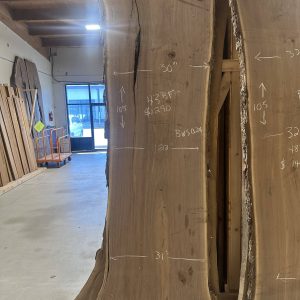Find Your Perfect Wood Product
If you find a product you like, reach out to us for more details and assistance.
Bubinga cookie
Bubinga is an exotic wood from Central Africa. It is initially pinky-red, but darkens with age. It is popular for tool handles, decorative veneers, turnery, boatbuilding, knife handles, and can be used as an alternative to rosewood.
Length: 49 x 51"
Thickness: 16/4
- Common Name(s): Bubinga, Kevazingo
- Scientific Name: Guibourtia spp. (G. demeusei, G. pellegriniana, G. tessmannii)
- Distribution: Equatorial Africa
- Tree Size: 130-150 ft (40-45 m) tall, 3-6 ft (1-2 m) trunk diameter
- Average Dried Weight: 56 lbs/ft³ (900 kg/m³)
- Janka Hardness: 2,410 lbf (10,720 N)
- Crushing Strength: 10,670 lbf/in² (73.6 MPa)
Heartwood: Ranges from a pinkish red to a darker reddish brown with darker purple or black streaks.
Sapwood: Pale straw yellow, distinctly demarcated from heartwood.
Grain: Usually straight, but can be interlocked.
Texture: Fine to medium with good natural luster.
Rated as very durable and resistant to most insect attacks.
Bubinga is fairly easy to work with, though pieces with interlocked grain can cause tearout during machining operations. Bubinga turns, glues, and finishes well, and it also responds well to steam bending. The wood can be susceptible to splitting when nailed or screwed.
- Fine furniture








Bubinga is sometimes referred to as "African Rosewood," although it's not a true rosewood in the Dalbergia genus. Its density and strength properties are similar to those of other rosewoods, making it a popular choice for high-end woodworking projects. Bubinga's distinctive color and grain patterns make it highly sought after for decorative applications.
Note: Bubinga is listed on CITES Appendix II, which includes species that are not necessarily threatened with extinction but may become so unless trade is closely controlled.